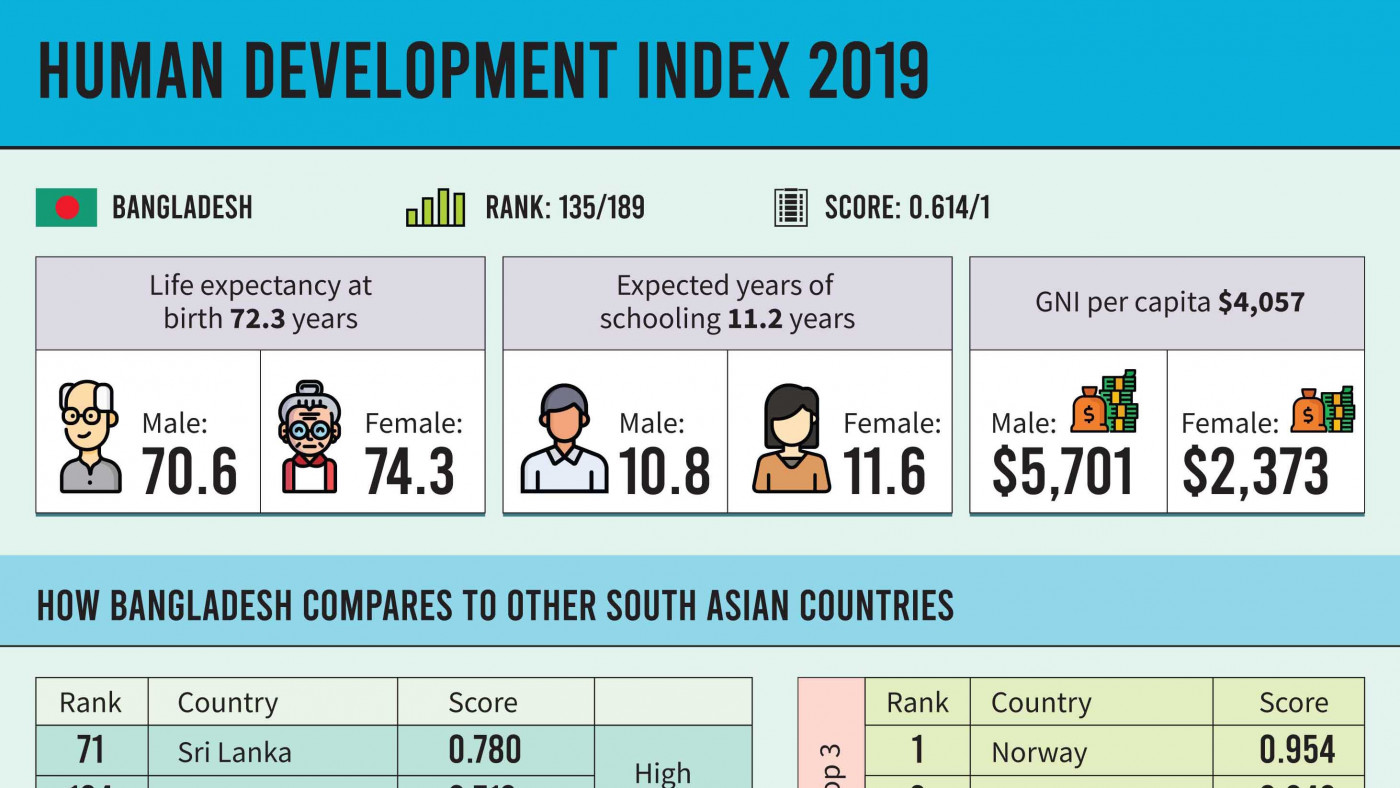Published in The Business Standard on Wednesday 11 December 2019
Economic development is being offset by massive inequality
The HDI notes that Bangladesh is facing vast inequalities in income, education, health service and employment based on region, gender, dominance and income groups

Bangladesh’s economic development is being offset by massive inequality despite an improvement by a notch in the Human Development Index (HDI).
The HDI notes that Bangladesh is facing vast inequalities in income, education, health service and employment based on region, gender, dominance and income groups.
Economists and representatives of development agencies focused on the publication of the UNDP’s HDI at a ceremony in Dhaka on Wednesday.
The UNDP published the report worldwide on Monday while the Bangladesh chapter of the report was made public jointly by the organization and the General Economic Division (GED) of the Bangladesh government two days later.
Planning Minister MA Mannan, the chief guest on the occasion, in his remarks noted that Bangladesh, having waged a decade-long struggle against hunger, had achieved success in ensuring food security for its citizens.
“Inequality arises in several areas of the economy due to starting from the bottom line,” said the minister, adding that the government had been providing books to schoolchildren free of cost, providing meals at schools, and implementing many other programmes to boost standards of living by raising people’s purchasing power.
He, however, made it clear that a VIP culture was a large obstacle to economic development but “we have been unable to eradicate it.”
Regretting the presence of a VIP culture in the country, Dr Hossain Zillur Rahman, Executive Chairman of Power and Participation Research Centre (PPRC), said the lion’s share of national wealth is now in the hands of some VIPs.
According to Dr Fahmida Khatun, Executive Director of the Centre for Policy Dialogue (CPD), a lower level of investment has been behind the lower quality of human development in the country.
She noted that despite a requirement of investment of about 12 percent of GDP in developing skilled manpower, allocation in the sector is only about half of what is needed.
In his comments, Dr. Kazi Kholiquzzaman, chairman of PKSF, drew attention to the fact that with natural disasters making people poorer, climate change has been increasing inequality in society. To meet the challenge of the fourth industrial revolution, he emphasized the need to look to the development of skilled human resources.
Shamsul Alam from the GED stated that Bangladesh was doing well in eliminating gender inequality in the education sector and increasing per capita income.
He said that national wealth was concentrated among five percent of the richest people while the poorest five percent of people have been losing out.
Sudipto Mukerjee, Resident Representative of UNDP Bangladesh said, “The main premise of the human development approach is that expanding people’s freedom is both the main aim of, and the principal means for sustainable development. If inequalities in human development persist and grow, the aspirations of the 2030 Agenda for Sustainable Development will remain unfulfilled.”
Bangladesh has moved from 136 to 135 among 189 countries in the Human Development Index (HDI).
Sri Lanka holds the top position in south Asia, securing the 71st position in the world.
Maldives is at 104, India is at 129, and Bhutan at 134, while Nepal, Pakistan, and Afghanistan are at 147, 152 and 170, in that order.
Norway, Switzerland, Ireland, Germany, and Hong Kong (China) are at the top, while Niger, the Central African Republic, Chad, South Sudan, and Burundi have hit rock bottom.
Since the HDI commenced in 1990, Bangladesh scored 0.388, 0.470 in 2000, and 0.549 in 2010.
Between 1990 and 2018, Bangladesh’s HDI value increased by 58.2 percent (from 0.388 to 0.614), placing it in the medium range of the human development group.
This indicates that in the last three decades, Bangladesh’s life expectancy at birth increased by 14.1 years, average years of schooling increased by 3.2 years and expected years of schooling increased by 5.6 years.

